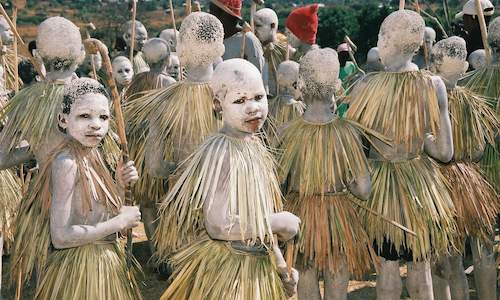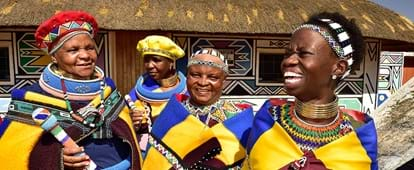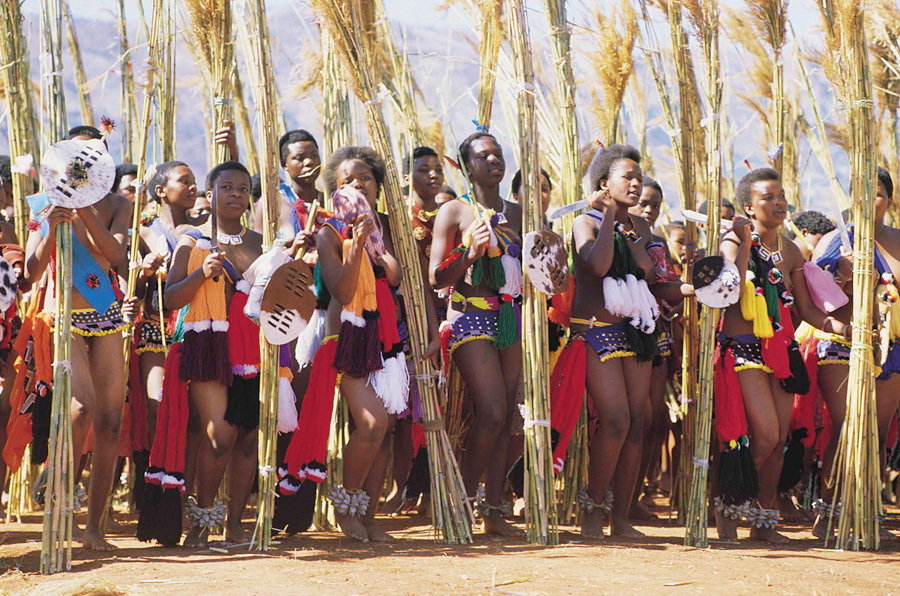South African Culture Today Can Be Fun For Everyone
Table of ContentsWhat Does South African Culture Today Mean?Some Ideas on South African Culture Today You Should KnowExamine This Report about South African Culture TodayMore About South African Culture TodayThe Best Guide To South African Culture TodayFascination About South African Culture Today
An issue of significance in Zambian villages is the passing away of enjoyed ones. All members of the town placed money, time and effort with each other for the burial of the deceased.During the grieving period; men stay outside the house and the women stay inside the home of the deceased. After chatting regarding the deceased, the village walks to the location of interment to claim their last goodbyes. Music and dancing is an extremely crucial facet of the Zambian society. The various tribal systems have their own dancing types; nevertheless, makishi is usual among all people.
The smart Trick of South African Culture Today That Nobody is Talking About
When it pertains to music, drums are made use of the most, with a range of drumming ceremonies. In Zambia, bulk of the people are Christian; Protestant and Roman Catholic. There are tiny groups of Muslims and Hindus, with the remainder following neighborhood native tribal ideas.

South African heritage and culture is immensely diverse, and includes several teams of individuals who each have their own customs and ideas. Having such a variety of individuals and societies is what makes South Africa so special. In real sense of the phrase, we are a rainbow nation.
Making it the 7th on the list of nations with the most Portuguese people in it outside of Portugal. Portuguese is not only a society, however it is also a language and a race. Portuguese people stem from the country of Portugal in Europe, nonetheless, due to Portugal (like several other countries in Europe) checking out the world and overcoming various other nations throughout the 15th 20th centuries, South Africa has what we call Portuguese South African's living in it.
The smart Trick of South African Culture Today That Nobody is Discussing
Amongst the popular attributes of the topography is a plateau that covers practically two thirds of the facility of the country. The plateau facility rises toward the southeast, where it climaxes in the Drakensberg range, component of an escarpment that separates the plateau from the seaside areas. The Drakensburg consists of Champagne Castle, the highest height in the country.
The region north of the Witwatersrand, called the bushveld, inclines downward from eastern to west toward the Limpopo River, which develops the worldwide border. The western section of the plateau, the middleveld, likewise comes down towards the west and differs in altitude between the highveld and bushveld. Between the Drakensburg and the eastern and southern shoreline, the land descends to the sea.
Nearer the coastline there is a low-lying level called the eastern lowveld. Southwest of the plateau the country comes to be gradually a lot more dry, paving the way to the hostile desert of the Great Karroo, verged on the eastern by the lower, better sprinkled plateau of the Little Karroo. Separating the completely dry southerly interior from the sandy littoral of the southerly shore and West Cape is an additional array, the Langeberg.
The smart Trick of South African Culture Today That Nobody is Talking About
The nation's racially, ethnically, and politically separated background has actually created nationwide and subnational icons that still function as symbols of the country, and others icons that are approved just by specific groups. The monoliths to white settler conquest and political dominance, such as the Afrikaner Voortrekker ("pioneer") Monolith in Pretoria and the Rhodes Monolith honoring the British colonial empire builder and Cape head of state Cecil Rhodes, continue to be sectarian signs.
The very first modern-day citizens were the San ("bushman") hunter-gatherers and the Khoi ("Hottentot") individuals, that herded animals (South African culture today). The San may have been present for thousands of years and left proof of their existence in countless ancient cave paintings ("rock art"). Bantu-speaking clans that were the forefathers of the Nguni (today's amaZulu, amaXhosa, amaSwazi, and vaTsonga peoples) and Tswana-Sotho language teams (today's Batswana and Southern and Northern Basotho) moved below east Africa as very early as the fifteenth century

Both previous republics of the Orange Free State and Transvaal (South African Republic) were developed by Afrikaner settlers who defeated and dispossessed the Basotho and Batswana. Lesotho would have been forcibly incorporated right into the Orange Free State without the extension of British protection in 1869. The utmost marriage of the country arised from the South African War (18991902) in between the British and both Afrikaner republics, which minimized the nation to wreck at the beginning of the twentieth century.
Afrikaners traditionally considered themselves the only true South Africans and, while granting complete citizenship to all locals of European descent, rejected that standing to people of color up until the autonomous transition of 1994. British South Africans retain a sense of cultural and social link to Great Britain without weakening their identification as South Africans.
South African Culture Today Can Be Fun For Anyone
The variety and fragmentation within ethnic groups and the balance of tensions between those groups during the twentieth century protected against interethnic civil problem. While intergroup tensions over sources, entitlements, and political prominence stay, those conflicts are as likely to match Zulu against Zulu as Zulu versus Xhosa or African against Afrikaner.
From colonial India, British vendors and administrators brought the rounded metal ornamental roofings and slender shoelace job columns that still exemplify the outdoor patios of cottages in towns and cities throughout the nation. Residences of prayer add an important building element even in the smallest communities. Along with the soaring steeples and traditional stonework of Afrikaans Dutch Reformed churches, Anglican churches, synagogues, mosques, and Hindu shrines give selection to the religious building scene.

Butchering and the brewing of traditional cereal beer are vital in protecting the engagement and a good reputation of the ancestors who are useful content taken into consideration the guardians of special info good luck, success, and well-being. Indian neighborhoods keep their native culinary customs and use them on Islamic and Hindu ritual and ceremonial events. Afrikaners and Coloured individuals gather at weekends and special occasions at multifamily barbecues called braais, where neighborhood bonds are reinforced.
Because this was the main economic venture of both black Africans and white colonists, conflict between those groups focused on the possession of grazing land and livestock. In 1867, the largest diamond down payments worldwide were found at Kimberley in the west main area. The riches from those fields assisted finance the exploitation of the best gold reef in the globe, the original source which was uncovered on the Witwatersrand in 1886.
All about South African Culture Today
This led to misconceptions and calculated misstatement in the negotiations of white settlers and federal government authorities with African principals during the early american duration (South African culture today). In the establishment of African reserves, some facets of public and mainly "tribal trust" land tenure were protected, and even in white backwoods, types of common tenure were still exercised in areas with African neighborhoods
After the democratic transformation of 1994, programs for land restitution, redistribution, and reform were set up, however development has been slow-moving. The white minority still controls eighty percent of the land. Following agricultural land invasions in Zimbabwe, the Division of Land Affairs has actually promised to speed land redistribution.